— ARGUS is: An Almost Cock and Bull Story

Part I: The All-Seeing
The voice of god speaks; we’re told we’re not ready to see something special. It’s classified. A camera tracks to the right and zooms in on a tarp covering an object. Dr. Yiannis Antoniades, a scientist at BAE Systems, a private multinational defense, security, and aerospace company, interjects: “it is important for the public to know,” but, he goes on, “we are not allowed to expose some of the pieces that make up the sensor, so you get to look at pretty plastic curtains.”1“Rise of the Drones,” PBS Video, 53:04, January 23, 2013 →
Hiding underneath the covers lays ARGUS-IS, or Autonomous Real-Time Ground Ubiquitous Surveillance Imaging System, a Defense Advanced Research Projects Agency (DARPA) project contracted out to BAE Systems. Clocking in at 1.8 gigapixels, ARGUS-IS is the world’s most advanced video imaging device. As the NOVA documentary program Rise of the Drones continues, we learn of a rather old but clever trick: in order to cut costs and fast-track the project, this hardware is made out of readily available parts. Specifically, 368 common cell phone cameras were appropriated and tiled to form one gigantic composite lens. When loaded onto an aircraft and lifted to an altitude of about 17,500 feet, ARGUS-IS utilizes this mosaic to record and broadcast a live feed that collectively scans thirty-six square miles of the earth. It’s “equivalent to having up to a hundred Predators [drones] look at an area the size of a medium-sized city at once.”2Jay Stanley, “Drone ‘Nightmare Scenario’ Now Has a Name: ARGUS,” ACLU, February 21, 2013 → And each of its constituent eyes acts independently; ARGUS-IS can zoom in at one scale while not losing sight of the overall scene. To escape its gaze, you’d have to be smaller than six inches.
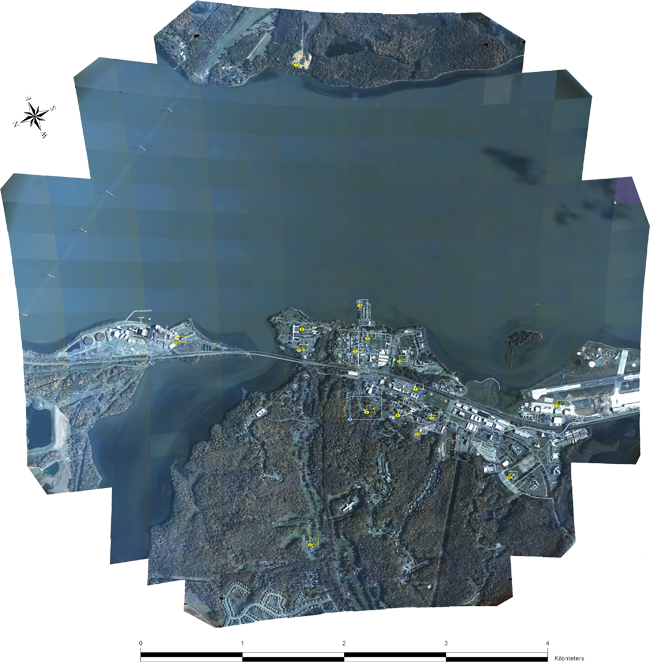
ARGUS is also a backronym. Argus, or more specifically, Argus Panoptes (“all seeing”), is the name of a legendary many-eyed giant. Fictive descriptions of him developed over time; at first Argus only had four eyes, however, he was soon detailed with over a hundred so that a few could go to sleep while several others remained open and alert.3“The head of Argus (as with the stars in the skies) / Was compass’d round, and wore an hundred eyes. / But two by turns their lids in slumber steep; / The rest of Duty still their station keep.” Ovid, The Metamorphoses, Book 1, trans. Sir Samuel Garth, John Dryden, et al. (1717). Engineers might call such a system of built-in redundancies “robust.” The allusion to the monster by the DARPA surveillance project is technically apt; as soon as a tracked body leaves one of ARGUS-IS’s patchwork grids, another camera takes over to follow. But maybe something more is coded into the reference?
In Book I of The Metamorphoses, the Roman poet Ovid writes the story of Io, the raped “mistress” of Jupiter, and how Jupiter transformed her into a heifer so as to hide her from the rage of his wife, Juno. Wise to the ruse, Juno captured the cow and sent Argus to detain her. Jupiter, distraught, dispatched the god Mercury to assassinate Argus so as to spring Io—and succeeded. To appease the angered Juno, Mercury cut Argus’s hundred eyes out and handed them over; in turn, Juno then embedded each eye into the train of the peacock, her sacred animal. This is how the bird got its famous plumage.
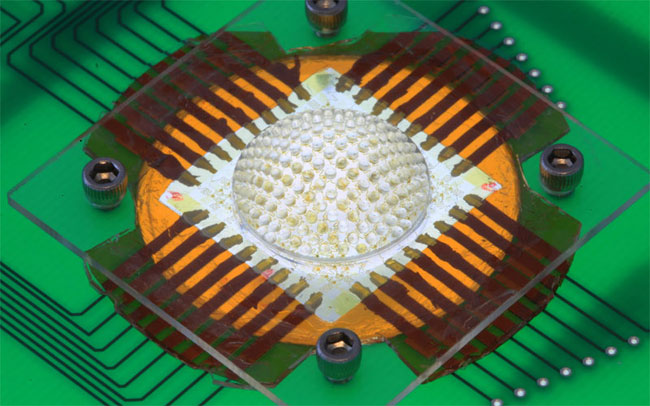
Juno is the Roman goddess of marriage, and so this tale of infidelity and subterfuge can be read along familial lines. However, Juno not only presides over the household but also over the community in general, including the entire state. The symbol of the (lightly) fined Mercury, god of communication, secrets, borders, and finance, is worth remembering, just as is his “judiciary” slap on the wrist. But you might be wondering: As the eyes of Argus became a peacock’s plumage, does ARGUS-IS become a bird as well?
In addition to the ARGUS-IS program, DARPA is currently cofunding a project with Boeing called SolarEagle, a program aimed at creating solar-powered unmanned aerial vehicles capable of staying aloft continuously for as long as five years.4Ned Smith, “Solar-powered UAV Can Stay Aloft 5 Years,” NBC News, September 22, 2010 → When teamed with ARGUS-IS, SolarEagle may soon become the world’s ultimate spy plane. Curiously, the eagle, or Aquila in Latin, is not the classic symbol of Juno, but of the rapist Jove, whose story is also told in The Metamorphoses. The eagle signifies Jove’s lightning strike, and by extension, the “Aquila” also became the standard of a Roman Legion and its deadly force—an emblem this techno-tandem of ARGUS-IS and SolarEagle may too own when it soon covers all our skies, and likewise will be called upon not only to watch, but to guide missiles down upon the ground.
How did such terrors come to pass?

Part II: Where Io Really Went
In 1610 Galileo turned a telescope toward Jupiter and caught sight of four moons circling the planet, one of which is now known as Io. The discovery rattled the world; Aristotelian Cosmology, which declared that all heavenly bodies circled only the earth, was proven wrong. Although geocentric thinking should have died then and there, we now focus our most powerful looking glasses not only upon the heavens, but have aimed them directly down on the earth at ourselves. In the brief for this meditation, I was asked: Is the universe a gigantic computer? Instead, I would like to ask: Are supercomputers universal—in the sense of equality or universal justice—or are they simply ubiquitous? Furthermore, do they have a cosmology? And lastly, what is their nature when we train them on our planet?
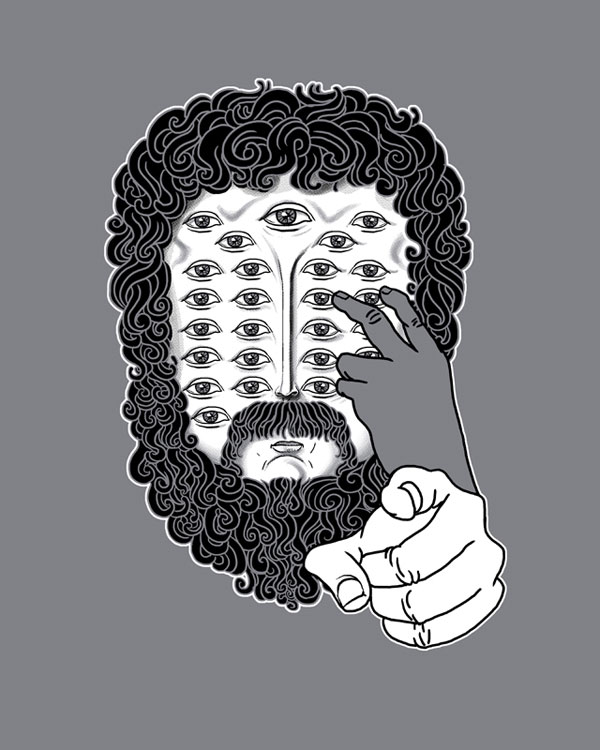
Part III: When Analogs Go Astray
As in the cases of both monsters’ compound eyes, Darwin proposed that small and simple things come together to form increasingly complex things and systems. Take what we call the internet, a network of networks, as one example.
I’m sure you’ve heard the folksong that the internet was designed as a defensive communications network to safeguard a chain of command during a Soviet nuclear attack. 5Paul Baran, “On distributed Communications: I. Introduction to Distributed Communications Networks,” Memorandum RM-3420-PR, Prepared for the United States Air Force Project RAND (Santa Monica: The RAND Corporation, 1964). The concern it was built to address was: If a single nuclear missile obliterated a given headquarters, how could new command centers be set up to utilize the larger communications network not taken out by the attack’s blast? Said in another way: How is it possible to cut off the head of the snake and keep it alive?
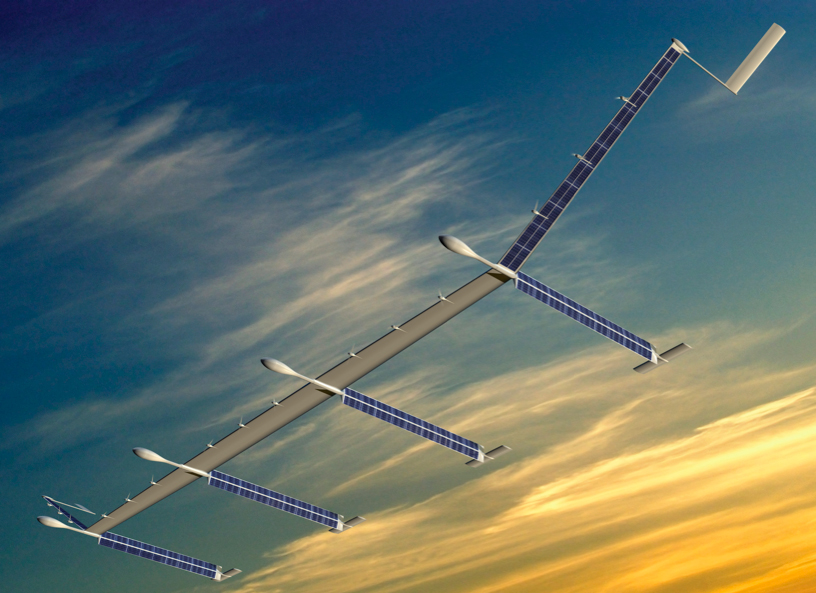
In the early 1960s, engineer Paul Baran was working on the problem for the RAND Corporation, which was at the time a think tank for the US military. Realizing that the analog telephone-switching network was too centralized and thus too sensitive, Baran proposed to spread command and control messages across a vast distributed digital network so robust that it would be statistically impossible to knock it out in total. Fearing the criticism that such a system would take too long to build and would be too expensive, Baran realized that:
if you could chop up a network, and it would still behave and work well, then there was no reason you had to make the links out of gold-plated parts … since you don’t care whether the network link has failed because of enemy action, or just because it’s cheaply built, does the same things … now you could build networks that were very reliable on unreliable parts … redundancy is the key!6 “An Evening with Paul Baran, in Conversation with Henry Lowood,” YouTube video, 1:10:06, posted by “ComputerHistory,” December 20, 2011 →
Baran never got to make his network. He did, however, brief Leonard Kleinrock, then-head of an ARPA (now DARPA) project called ARPANET. Things started to ferment, and in 1969, ARPANET completed its first networked message.
The Soviets never attacked …
Peacefully, ARPANET grew into bigger and separate, but linked networks with names like CSNET, NSFNET, and so forth; however, this system would soon get “chopped up.”
Like ARGUS-IS, SolarEagle, and countless other programs, ARPANET and its descendants are the result of federally cofunded public-private partnerships, often with a heavy industry base, sometimes a military one. Although originally aimed at uniting universities and other research centers for educational purposes only, NSFNET was soon privatized and gave way to our now totally commercialized internet.7 David C. Mowery and Timothy Simcoe, “Is the Internet a U.S. Invention? – An Economic and Technological History of Computer Networking,” December 2002 → And like the rise of the drones and the rise of the bots, the rise of secretive and proprietary inter- and intra-nets, which link both private and secure supercomputers, needs more discussion today.
If a universe is a supercomputer, then we should be able to zoom in and check whether differing galaxies and solar systems are contained within it. On a low level of magnification, we might eye the so-called internet and its “evil twin,” the darknet. Zooming more, we might find things like Silk Road, Tor, and so on. While these networks are popularly stigmatized, there are many other legitimate operations underway to devise various hidden connections between supercomputers, so as to create asymmetrical economic advantages (or disadvantages).
Take, for example, the practice of high-frequency “front running,” a legalized form of predatory insider trading achieved by the direct linking of peering fiber networks.8Michael Lewis, Flash Boys: A Wall Street Revolt (W. W. Norton & Company, 2014). Or likewise, the 827-mile cable built and controlled by Spread Networks to offer private connections near the speed of light ostensibly between Chicago’s Mercantile Exchange and New Jersey’s NASDAQ.9Jerry Adler, “Raging Bulls: How Wall Street Got Addicted to High-speed Trading,” Wired, March 8, 2012 → Fiber is denser than air though, and as such, we are now trying to set up networks through the sky.
This summer Facebook will launch “Aquila,” a multi-million dollar SolarEagle-like drone designed to bring internet access to two billion new clients in underdeveloped counties through laser-guided signals beamed down from above. With the initiative dubbed as internet.org, one has to wonder if Facebook, a multi-billon dollar corporation that plies its trade through the internet, might seek some inurement from its so-called nonprofit social program aimed at connecting the entire planet.10 See → We’re told that “we’re all in it together,” and a telling list of corporate partners are named. 11Ibid.
Coming back to the concept of cosmology though, we need to start paying attention to where each of our new supercomputers and their networks come from, what their means are, and how they change over time. The question, as labor historian Simon Head has brought to the surface, is not about the nature of technology, but rather how it is deployed.12Quentin Hardy, “A Talk With Simon Head, Author of ‘Mindless: Smarter Machines Are Making Dumber Humans,’” New York Times Bits blog, April 12, 2014 → ARGUS-IS already proposes a frightening example of applied computing, and in “The Machines Are Coming,” a recent article in the New York Times, author Zeynep Tufekci opined, “computers do not just replace humans in the workplace. They shift the balance of power even more in favor of employers.”13Zeynep Tufekci, “The Machines are Coming,” New York Times, April 18, 2015 →
If anything, this all sounds less than stellar.
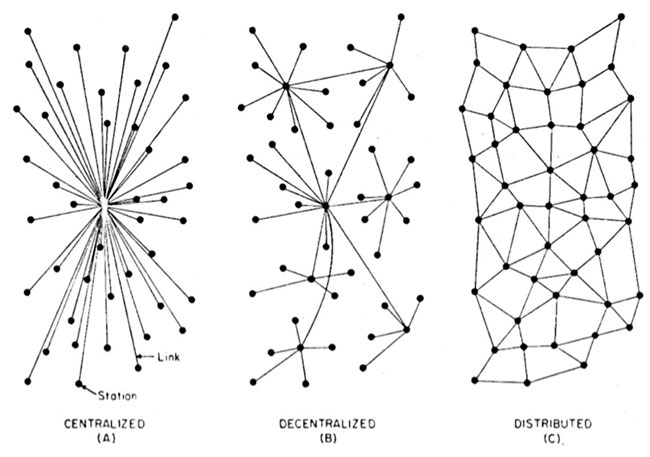
Part IV: Parallel Universes
I want to be rendered redundant. I really wish it so. Like the state, that thing that was supposed to wither away. Maybe this is why I’m writing on a topic that is de trop, the internet, that “thing” that never sleeps, even though it visits dreams. However, it was not I, but Engineer Colonel Anatolii Kitov, deputy head of the Computation Center No. 1 of the Ministry of Defense, who was fired.
Coauthor of the first Soviet article on cybernetics and author of the first Soviet book on computers, Kitov proposed something radical to fix the administrative slush that bogged down Nikita Khruschev’s “thaw.” According to historian Slava Gerovitch, Kitov
proposed first to install computers at several large factories and government agencies, then to link them together to form “large complexes,” or networks, and ultimately to create a “unified automated management system” for the national economy.14Slava Gerovitch, “InterNyet: Why the Soviet Union did not build a nationwide computer network,” History and Technology, vol. 24, no. 4 (December 2008).
In addition:
Kitov suggested that these measures would lead to a significant reduction in administrative and management staff and even to the elimination of certain government agencies. He realized that potential personnel cuts would cause friction, and suggested that a new powerful agency be created to implement the automation and reorganization of work in all government institutions.15Ibid.
Although Kitov proposed a paired welfare system in which persons laid off due to supercomputing would be taken care of, he believed that “people in power were concerned that, as a result of the introduction of computer technology, many of them could prove redundant.”16Anatolii I. Kitov, “Chelovek, kotoryi vynes kibernetiku iz sekretnoi biblioteki,” Komp’iuterra, no. 43 (November 18, 1996). Not surprisingly, apparatchik ideology stifled this other system from being born. Ironically, the Soviet project, which preceded the US project by several years, stoked American interests in a like program.17Slava Gerovitch, “InterNyet.” Reflecting on this state of affairs, Gerovitch noted that
The cybernetics scare both focused the attention of U.S. science administrators on human-machine interaction and made explicit cybernetic references ideologically suspect. As a result, Americans pursued a narrowly defined but viable technical project, while the Soviets aimed at a utopian grand reform. This teaches us something about the power of discourse: it resides not so much in overt declarations but in subtle metaphors that change our mode of thinking and ultimately reshape our world.18Slava Gerovitch, “The Cybernetics Scare and the Origins of the Internet,” Baltic Worlds, vol. II:1 (2009).
Let’s return to metaphors then.
Juno stripped of the state is simply the goddess of the family, or, more directly, the goddess of motherhood. As we continue to nurture more and more supercomputers, and possibly populate not only the earth, but the entire sky with them as well, we have to ask: Are we really going into this whole thing as responsible and mature adults?
×
Adam Kleinman is the lead curator of "Art in the Age of Planetary Computation," now on view at Witte de With Center for Contemporary Art.


